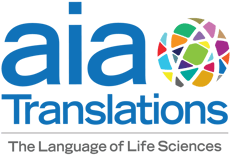Ensuring Language Access Rights in the U.S.: Why Translators and Interpreters Are Essential for Equity
Medical Pharmaceutical Translations • Apr 7, 2025 12:00:00 PM

In a multilingual nation like the United States—where over 68 million people speak a language other than English at home—language access rights are not just a policy consideration; they are a fundamental component of equity, public service, and human dignity. For professionals in the translation and interpreting industry, understanding the legal, historical, and practical dimensions of language access is essential to our work and mission.
This blog post explores the evolution of language access rights in the U.S., their impact on critical sectors like healthcare, and why linguists play a pivotal role in advancing linguistic justice.
A Brief Historical Framework: Where Language Access Rights Began
The cornerstone of language access in the U.S. lies in Title VI of the Civil Rights Act of 1964, which prohibits discrimination based on race, color, or national origin in any program or activity receiving federal financial assistance. Though not explicitly about language, the U.S. Department of Justice has long interpreted discrimination based on language ability as a proxy for national origin discrimination. This interpretation became more formalized in Executive Order 13166, signed in 2000 by President Bill Clinton.
Executive Order 13166 required all federally funded agencies to:
-
Assess the language needs of their service populations
-
Develop Language Access Plans
-
Provide interpretation and translation services that ensure "meaningful access" for people with limited English proficiency (LEP)
In the years since, numerous agencies—such as the Department of Health and Human Services (HHS), Department of Education, and Department of Justice—have issued their own guidance documents reinforcing these requirements.
The Real-World Impact: Language Access in Healthcare
While language access is vital across many sectors, nowhere is its importance more evident—and more urgent—than in healthcare. Miscommunication between patients and providers due to language barriers can lead to:
-
Misdiagnoses or delayed diagnoses
-
Inappropriate treatment or medication errors
-
Lack of informed consent
-
Reduced adherence to medical instructions
-
Decreased patient satisfaction and trust
A 2020 study by the National Institutes of Health found that patients with LEP had significantly higher rates of adverse medical events and hospital readmissions when professional interpretation services were not provided.
Federal regulations now require healthcare providers that receive federal funds (such as Medicaid or Medicare) to offer free language services, including qualified interpreters and translated documents. The Affordable Care Act (ACA) further emphasized these requirements, recognizing language access as a core aspect of non-discrimination in health services.
For translators and interpreters, this creates both a moral obligation and a growing demand. Our work is not simply transactional—it is instrumental in upholding patients’ rights and protecting lives.
The Expanding Role of the Language Industry
As language access laws have evolved, so too has the translation and interpreting industry. In the U.S., this sector is projected to grow substantially, driven by increasing linguistic diversity and the growing recognition of the importance of inclusive communication in both public and private sectors.
In addition to medical and legal fields, language professionals are now essential in:
-
Education: Supporting families in Individualized Education Programs (IEPs), school notices, and parent-teacher communication
-
Public health: Translating emergency alerts, vaccine information, and mental health resources
-
Government services: Ensuring access to voting materials, immigration documents, and social services
-
Legal proceedings: Upholding the right to due process through courtroom interpretation and translated legal documents
With this growing demand comes the need for highly trained, culturally competent professionals who understand both language and context. Certification programs, professional standards (such as those from the National Board of Certification for Medical Interpreters or the American Translators Association), and continuing education are critical for maintaining quality and consistency in this expanding field.
Why Language Access is a Human Right—And How We Can Help Protect It
At its core, language access is a civil and human right. It's about ensuring that all individuals—regardless of the language they speak—can access services, exercise their rights, and participate fully in society.
For language professionals, this is more than a job—it’s a calling. We are the bridge between systems and individuals, between services and those who need them most. Our work enables informed decision-making, builds trust, and, in many cases, saves lives.
However, challenges remain: underfunded programs, inconsistent implementation of language policies, and the undervaluing of professional language services still exist. Advocacy, awareness, and education—both within and beyond the language industry—are key to addressing these gaps.
Final Thoughts
Language access rights in the United States are rooted in decades of civil rights progress, but their implementation relies heavily on the people who carry them out—translators, interpreters, project managers, and language advocates.
As professionals in the language industry, we are not just service providers—we are protectors of access, equity, and dignity.
Let us continue to raise the standard, hold institutions accountable, and ensure that every voice—no matter the language—is heard and understood.
Do you work in healthcare or legal translation? Have you seen the impact of language access firsthand? Share your stories and insights
